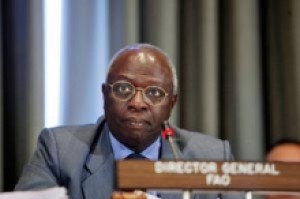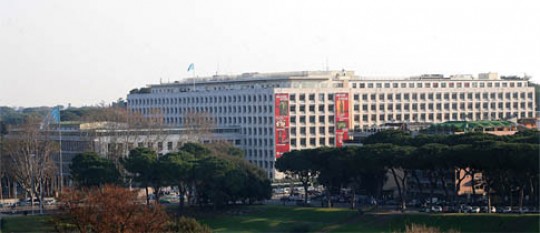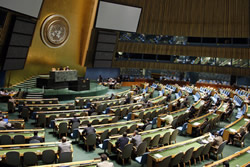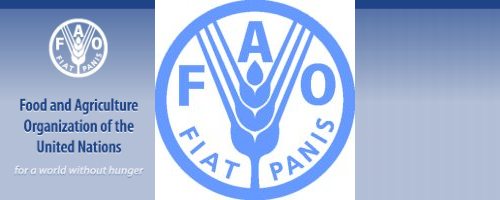Building political momentum for famine-free Horn of Africa
Building political momentum for famine-free Horn of Africa
Diouf urges adequate and predictable funding for HoA region
 New York – FAO Director-General Jacques Diouf today called for “adequate and predictable” financial resources to resolve the crisis in the Horn of Africa.
New York – FAO Director-General Jacques Diouf today called for “adequate and predictable” financial resources to resolve the crisis in the Horn of Africa.
“I have no doubt that the fight against hunger in the Horn of Africa can be won, and that food security can be ensured for all the people in the region,” Diouf told a Ministerial “Mini-Summit” meeting in New York to address the emergency.
“But to achieve our goal , we need adequate, predictable financial resources to ensure that the technical knowledge we have and the strategies and programmes developed can help us achieve that vision,” he added.
Response delayed
The international community’s response to the drought and spreading famine affecting 13 million people in the Horn of Africa has, however, been “delayed and inadequate” so far, Diouf stated. Only 63 percent of the United Nations’ funding requirement – $2.5 billion in all – has been pledged.
The number of hungry people in the region had thus grown by 1.7 million in the last two months, with famine declared in six regions of Somalia and 750 000 people at high risk, he noted.
Mitigating future risk
In the course of two meetings held at FAO Headquarters in Rome in July and August, Governments and other stakeholders agreed on a series of measures to mitigate the immediate disaster and build resilient livelihoods to lessen the risk of future calamities, Diouf recalled.
Such medium and long-term interventions could be implemented through the existing Comprehensive Africa Agriculture Development Programme (CAADP) prepared with the support of FAO and approved by the African Union at Maputo in 2003, Diouf said.
But “We must assure sufficient, predictable resource flows from both affected national governments and their development partners, without which, we will find ourselves returning to today’s agenda with depressing regularity,” Diouf stressed.
Long-term development
Diouf said he was encouraged by a recent meeting of Horn of Africa Governments with the African Development and World Bank representatives in mid-September, when the banks agreed in principle to mobilize $500 million for long-term development.
“FAO has confirmed its readiness to support this programme through its technical, disaster-risk management, policy and investment planning expertise,” he declared.
“Let us sustain the political momentum that will create a famine-free Horn of Africa,” Diouf concluded.
###
> UN Food and Agriculture Organization (FAO).
The Food and Agriculture Organization of the United Nations (FAO) is an intergovernmental organization and has 191 Member Nations, two associate members and one member organization, the European Union. Achieving food security for all is at the heart of FAO’s efforts – to make sure people have regular access to enough high-quality food to lead active, healthy lives.

FAO’s mandate is to raise levels of nutrition, improve agricultural productivity, better the lives of rural populations and contribute to the growth of the world economy.
The Food and Agriculture Organization of the United Nations (FAO) is working with its Members and the entire international community for achievement of the Millennium Development Goals.
These eight goals – each with specific targets and indicators – are based on the United Nations Millennium Declaration, signed by world leaders in September 2000. They commit the international community to combating poverty, hunger, disease, illiteracy, environmental degradation, and discrimination against women.
![]()
The eight Millennium Development Goals are:
Goal 1: Eradicate extreme poverty and hunger
Goal 2: Achieve universal primary education
Goal 3: Promote gender equality and empower women
Goal 4: Reduce child mortality
Goal 5: Improve maternal health
Goal 6: Combat HIV/AIDS, malaria and other diseases
Goal 7: Ensure environmental sustainability
Goal 8: Develop a Global Partnership for Development
* More information at UN Food and Agriculture Organization (FAO)
###
> United Nations (UN).
 The United Nations was established on 24 October 1945 by 51 countries committed to preserving peace through international cooperation and collective security. Today, nearly every nation in the world belongs to the UN: membership totals 192 countries.
The United Nations was established on 24 October 1945 by 51 countries committed to preserving peace through international cooperation and collective security. Today, nearly every nation in the world belongs to the UN: membership totals 192 countries.
When States become Members of the United Nations, they agree to accept the obligations of the UN Charter, an international treaty that sets out basic principles of international relations. According to the Charter, the UN has four purposes:
- to maintain international peace and security;
- to develop friendly relations among nations;
- to cooperate in solving international problems and in promoting respect for human rights;
- and to be a centre for harmonizing the actions of nations.
###
* The above story is adapted from materials provided by United Nations (UN)
** More information at United Nations (UN)





















